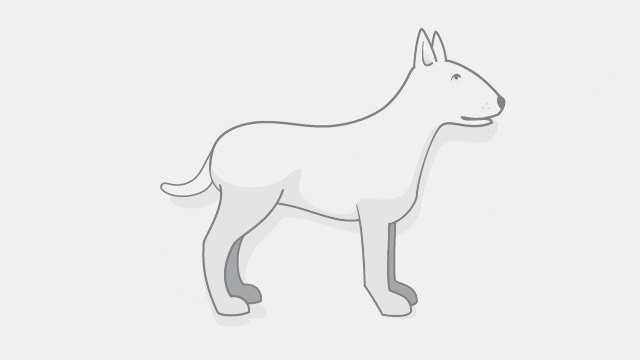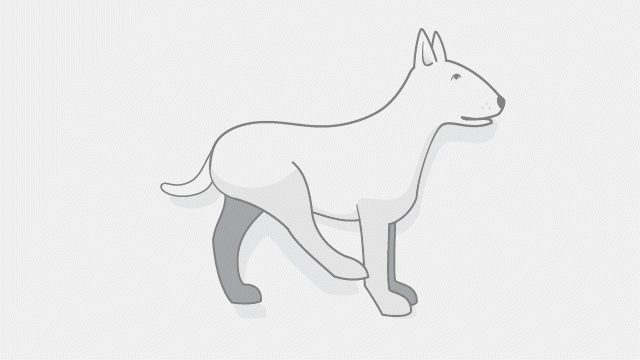
Post Operative Instructions for Orthopaedic Procedures
Your pet may be hospitalised overnight after the surgery. Your pet is recovering from major surgery and anesthetic and requires continued support and nursing care at home to ensure a successful outcome. During the recovery period of approximately 8-12 weeks, home care is extremely important.
WHAT TO EXPECT AFTER SURGERY
Your pet may experience:
- Grogginess
- Decreased appetite for 24-48 hours
- Decreased bowel movements for 5-7 days after coming home
- Mild bruising and discomfort a day after surgery
- Mild cough 2-3 days after surgery from the anesthetic tube causing a small amount of irritation to the throat
- Towel assistance may be initially required when walking to the toilet

MEDICATIONS
Antibiotics, pain relief and other medications may be dispensed. Please follow the corresponding labels accordingly.
BANDAGES
If used, bandages will need to be kept dry. If the bandage becomes wet, it will need to be immediately removed. Generally, they should be removed 3 to 5 days after surgery. We recommend making an appointment to have the bandage removed by a veterinarian or veterinary nurse. There is no charge for bandage removal (unless re-bandaging associated with specific cases is necessary).
PHYSIOTHERAPY AT HOME
Cold compresses can be placed on the site of the surgery/injury for 20min up to 3 times daily. This should be started immediately post-surgery (or after bandage removal) and continued for up to 10 days. Gentle massage and range of movement exercises (flexing and extending all the joints in the affected limb) can be performed up to 3 times daily, starting 3 days after surgery or when bandages are removed.
EXERCISE 1: BICYCLE MOVEMENT
Forward rotations
Backward rotations
EXERCISE 2: SIT TO STAND
Start slowly and repeat over the day. Gradually increase daily frequency.
It helps to increase muscle mass.
SUTURE REMOVAL
Sutures need to be removed 14 days after surgery. Sutures need to be kept clean and dry. An elizabethan collar is recommended to prevent chewing of sutures and contamination of the surgical site. A bitterant spray is available as an alternative if a collar is not suitable. It's important to avoid bathing until after suture removal.

CONFINEMENT
Your pet should be confined to either a cage or a small room/enclosure for approximately 2 months (unless a specific time frame is given by the vet). The pet can be taken out of their enclosure only under supervision (including periods of post-operative exercise outlined below) and must be kept controlled at all times. We recommend keeping a lead on whenever they are not confined.
- No access to slippery flooring or stairs
- No playing with other animals, running, jumping
- Walking must be on a leash and controlled
POST-OPERATIVE EXERCISES
For the initial 2 weeks, strict rest is required with very short walks out to toilet, on a lead, several times a day.
After 2 weeks, we recommend starting lead walks, initially 10min for the 1st week, 15min for the 2nd week, 20min for the 3rd week, and so on, gradually increasing until 2 months post operatively.
There should be No off-lead activity for the entire two months with running and jumping avoided. Stairs usage should be minimised and always on a lead. Gradually reintroduce stairs and hills as lead walks are increased.
Swimming can be started from 4 weeks after surgery, 5-10min twice weekly is recommended. Avoid running in sand, as this can exacerbate arthritis and puts excessive strain on healing limbs.
PHYSIOTHERAPY REHABILITATION
We can now offer a customised physiotherapy service to maximise your pets recovery. Dr Lindy Price from New Life Vet, is a rehabilitation practitioner and veterinary surgeon who can offer a structured program to strengthen and return your pet to its normal activity levels. For appointment times and costs please discuss with the discharging veterinarian or reception staff.
Physical therapy examples:
- Passive motion
- Swimming
- Balance exercises
- Leash walking
Benefits of rehabilitation exercise:
- Help maintain good body condition
- Speeds recovery
- Prevents further injury
- Improves fitness and health
- Potentially decreases the onset of osteoarthritis
- Improve mood
- Decrease pain
- Increase flexibility
- Improve blood flow
FOLLOW UP RADIOGRAPHS
Radiographs are generally taken at 6-8 weeks post operatively if required.
WHEN TO CALL THE VETERINARIAN
Please contact us if your pet:
- Cannot be confined
- Has difficulty toileting
- Has pale gums
- Is off food after 24 hours post surgery
- Is vomiting after 24 hours post surgery
- If you are concerned

warm, and helpful.
my questions were answered completely.
and colleagues.